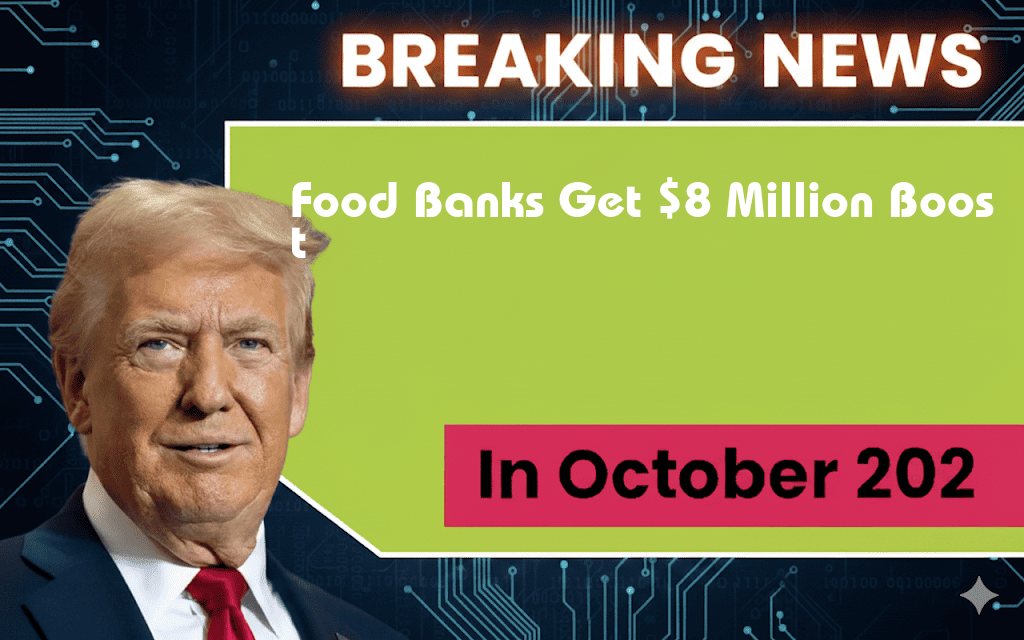Food banks across the United States are set to receive a significant financial boost of $8 million, coinciding with recent cuts to the Supplemental Nutrition Assistance Program (SNAP) benefits. This funding, which comes from various philanthropic organizations and government sources, aims to support food assistance programs as millions face increased food insecurity. With SNAP benefits declining for many families, food banks are bracing for a surge in demand as they strive to meet the needs of vulnerable populations. The initiative underscores the critical role food banks play in the community, especially during times of economic strain.
Understanding the Impact of SNAP Cuts
The recent cuts to SNAP benefits have raised concerns among advocates for low-income families. As federal support declines, many households are finding it increasingly challenging to afford basic necessities. According to the Center on Budget and Policy Priorities, approximately 42 million Americans rely on SNAP to help purchase food. Reduced benefits are expected to lead to a higher number of individuals seeking assistance from food banks.
Rising Demand for Food Assistance
Food banks across the country are preparing for a notable increase in demand as SNAP benefits are cut. Many organizations have reported that they are already operating at or near capacity. The National Association of Food Banks (NAFB) has indicated that demand could rise by as much as 20% in the coming months.
- Food banks are expanding hours and services to accommodate increased visitors.
- Many are ramping up fundraising efforts to bolster their resources.
- Volunteers are being recruited to assist with the expected influx of clients.
Allocation of the $8 Million Funding
The $8 million allocated to food banks will be distributed among various organizations and local food pantries. The funding is designed to enhance food distribution efforts, improve storage facilities, and expand outreach programs. This support is vital for addressing the immediate needs of families struggling with food insecurity.
| Organization | Amount ($) | Purpose |
|---|---|---|
| Feeding America | 3,000,000 | National food distribution operations |
| Local Food Pantries | 2,500,000 | Community outreach and supplies |
| Emergency Food Assistance Program | 1,500,000 | Short-term food relief |
| Nutrition Education Initiatives | 1,000,000 | Programs to promote healthy eating |
Community Response and Support
The community’s response to the funding announcement has been overwhelmingly positive. Local leaders and advocates for food security have praised the initiative as a necessary step in combatting hunger and supporting families in need. Many food banks are also partnering with local businesses and community organizations to maximize their reach and effectiveness.
- Collaboration with grocery stores for food rescue initiatives.
- Partnerships with schools to provide meals for children.
- Outreach programs to educate the community about available resources.
The Future of Food Assistance in America
As the landscape of food assistance evolves, organizations are emphasizing the importance of sustainable solutions. While the immediate boost of $8 million will help address current needs, food banks are calling for long-term strategies to combat food insecurity. Investments in local agriculture, improved SNAP benefits, and community education are all essential components of a more robust food assistance framework.
Advocates are encouraging individuals to get involved by volunteering or donating to their local food banks. These grassroots efforts are crucial for maintaining the momentum needed to support families facing food insecurity, particularly as SNAP benefits continue to fluctuate.
For more information on food assistance and how to help, visit Feeding America or the No Kid Hungry campaign.
Frequently Asked Questions
What is the significance of the $8 million boost for food banks?
The $8 million boost for food banks is critical as it helps them expand their resources and services, ensuring they can meet the increasing demand for food assistance, especially amid SNAP benefit cuts.
How are SNAP benefit cuts affecting low-income families?
The SNAP benefit cuts have resulted in reduced financial support for many low-income families, leading to challenges in accessing adequate nutrition and increasing dependence on food banks for essential meals.
What types of services do food banks provide to communities?
Food banks offer a variety of services, including food distribution, nutrition education, and assistance programs that help families access healthy food options and resources during times of need.
How can individuals support food banks during this time?
Individuals can support food banks by making monetary donations, volunteering their time, or organizing food drives to help ensure that local food banks can continue to provide for those affected by the SNAP cuts.
What are some long-term solutions to address food insecurity beyond food banks?
Long-term solutions to address food insecurity include advocating for stronger social safety nets, improving access to affordable housing, and implementing policies that provide living wages to help families meet their basic needs without relying solely on food banks.

Leave a Reply